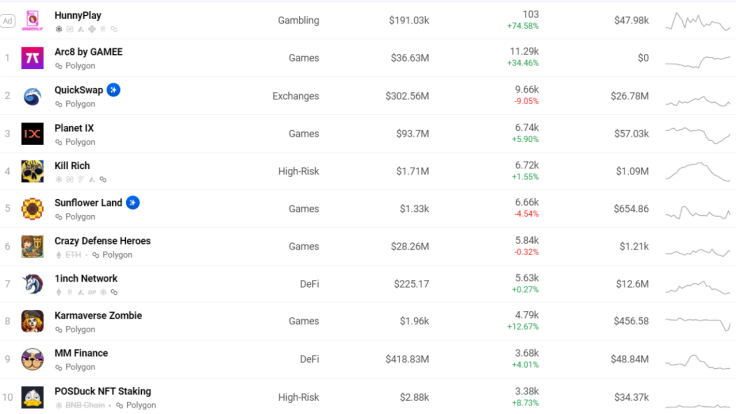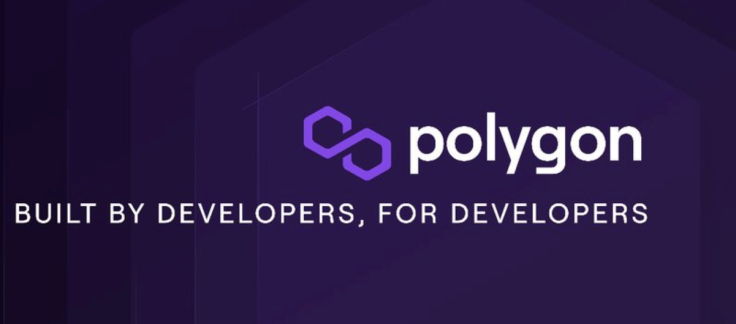After Falling Almost 70% This Year, Is Polygon (MATIC) Still Worth It?
KEY POINTS
- Polygon marked a 400% surge in the number of developers since the beginning of 2022
- The network claimed to have achieved carbon neutrality recently
- Polygon was also accepted for Walt Disney's Accelerator Program
Polygon (MATIC), one of the biggest Ethereum scaling solutions that rose to popularity following the surge in usage of the biggest blockchain network, witnessed substantial growth in 2021 but the MATIC price movement has been relatively quiet for 2022.
Polygon was created in 2017 by Jaynti Kanani, Sandeep Nailwal, and Anurag Arjun in India and aimed to tackle blockchain scaling and usability issues. It is a Layer 2 scaling solution, i.e., a blockchain imposed as an additional layer on top of the main blockchain. It was formerly known as the MATIC Network but was rebranded into Polygon in 2021. However, MATIC remained the native token of the platform.
According to CoinMarketCap data, the price of MATIC has dropped almost 70% since the beginning of 2022 while the broader market has also turned bearish. Following its rebranding and the surge in the popularity of NFT and blockchain gaming industries, the Polygon chain saw an influx of many projects.
Additionally, the MATIC token is 71.87% low from its all-time high of $2.92 and the situation hasn't improved for it in 2022.
Polygon has seen a significant reduction in prices despite its claims of processing 65,536 transactions per block. While the adoption of the token cannot be compared with Ethereum, Polygon has been gaining some mainstream attention lately.
Recently, Disney announced that Polygon would be a participant in Walt Disney's Accelerator program, a business development initiative taken by the California-based mass media and entertainment company. This caused MATIC prices to soar significantly as firms selected for Disney's program are eligible to receive guidance and funding from the entertainment company, helping them gain an advantage over their competitors.
Polygon is a blockchain that supports blockchain projects related to the metaverse, non-fungible tokens (NFTs), DeFi, and Web3 as well. With support from Disney, the Ethereum scaling solution might attempt to break out of its bearish streak.
According to another report, the network has claimed that it achieved carbon neutrality, i.e., net-zero carbon dioxide emissions. Polygon claims to have "retired $400,000 in carbon credits to offset 90,000 tonnes of greenhouse gasses produced since the blockchain network was created."
This news came amid rising fears of the environmental impact of blockchain technology and led investors to put their bets on a greener future. Polygon's carbon neutrality was a part of the Green Manifesto launched in April.
In an Aug. 10 blog post, Polygon shared that the number of decentralized applications (DApps) on the Layer 2 chain reached a value of 37,000, marking an increase of 400% since the beginning of 2022. Moreover, the number of monthly active development teams on the Polygon chain reached 11,800 at the end of July which marks a rise of 42.5% since March.
We’re having quite a year at @0xPolygon
— Ryan Wyatt (@Fwiz) August 11, 2022
💻 ~500 dApps in November, now 37,000+ with 11.8k active teams.
“Many projects are increasingly choosing to build solely on Polygon. Alchemy data shows that 74% of teams integrated exclusively on Polygon”https://t.co/ERiLHJiVdh pic.twitter.com/UzKZPlazWD
"Polygon's partnership with Alchemy in June 2021 proved to be an adoption catalyst, sending the number of dApps running on the network to 3,000 in October, 7,000 in January, and over 19,000 as of April," the post further added.
Additionally, according to DappRadar, the Dapps on Polygon have seen a significant increase in users recently.

On the other hand, the Total Value Locked as per DefiLlama has dropped by 23.18% in the last 30 days and also reflects the drop in the prices of the cryptocurrency.
Polygon has already seen an influx of projects from the defunct Terra community, along with permissionless credit protocol RociFi and WOO network's multi-chain decentralized exchange.
Moreover, the network is also preparing for the launch of the much-anticipated zkEVM, a layer 2 scaling solution aimed to increase the throughput on Ethereum Mainnet.
At the Ethereum Community Conference in Paris in July, Polygon described it as the "first Ethereum-equivalent scaling solution that works seamlessly with all existing smart contracts, developer tools and wallets, harnessing advanced cryptography called zero-knowledge proofs."
"Everybody thought [a zkEVM] was at least 12 to 18 months away," Nailwal told CoinDesk at the time. "But here we are, and we are open sourcing the code and making the test net live."
According to CoinMarketCap data, the MATIC market witnessed a rise of almost 100% in July following Disney's support and rise in Dapps as well.
The weekly chart shows that Polygon tried to push its price higher but failed to do so as it dropped almost 18% last week. However, two major indicators, the relative strength index (RSI) and Accumulation/Distribution (A/D) line, show that the situation is improving for the MATIC token.

The RSI indicator reads a value of 44.96 which means that overall, the selling pressure is quite high for the MATIC cryptocurrency while the gradient of the line suggests that the situation is improving for the token.
Additionally, the A/D line shows that the accumulation of the token has been rising while the buyers continue to hold their tokens instead of selling them, which is another bullish indication for MATC.

© Copyright IBTimes 2024. All rights reserved.


















